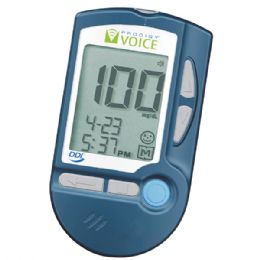
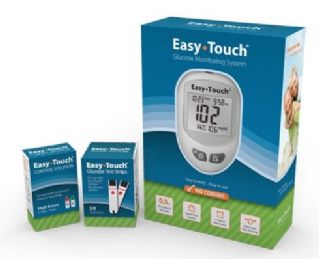
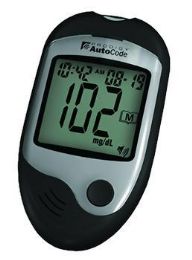
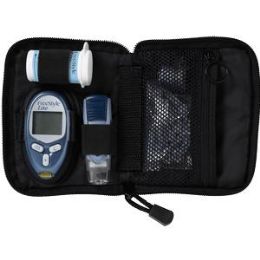
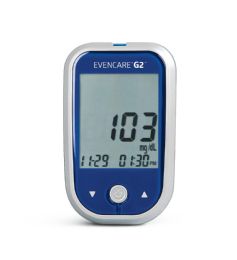

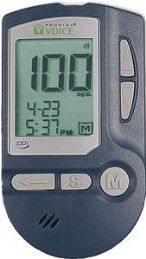
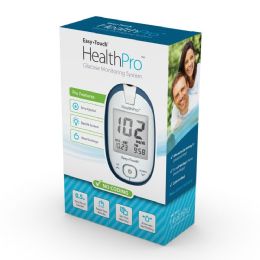
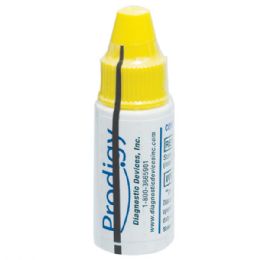
What are Glucose Meters?
Glucose meters are typically designed as very small and portable devices that can be used at home or anywhere an individual may roam. The features can vary among different models but most glucometers include a lancet/needle device that is used to prick the skin to draw blood. This blood sample is then placed on a specially designed disposable test strip that is inserted into the glucometer to calculate the blood glucose level, which is then displayed in units of mmol/l or mg/dl.
Generally battery-powered, glucose meters for home blood glucose monitoring are user-friendly so that just about anyone can learn how to use them correctly for efficient and accurate home blood glucose monitoring.
While most glucometers recommend using a fingertip for the glucose level test, some models allow you to test blood from other body sites such as your calf, thigh, forearm, upper arm or palm of your hand. However, it is important to note that these alternative testing sites may provide inaccurate results in certain situations. It is recommended to use your fingertip if any of the following issues apply:
If you are experiencing higher stress levels
If you are experiencing illness
If you think your blood sugar may be low
If you have recently eaten
If you have recently exercised
If you do not have awareness of hypoglycemic symptoms
If the results do not match up with the way you feel
What are the Benefits of Using Glucose Meters?
As a sugar that your body utilizes as energy, glucose levels in the blood are normally regulated by the body’s natural processes. However, when individuals are diabetic or hypoglycemic, they may require special diets and drug protocols to control levels of glucose in the blood.
Glucose meters provide a quantitative test to determine what your blood sugar levels may be at any time throughout the day or night. The results of this testing can help you and your doctor to figure out daily treatment adjustments, additionally alerting you to dangerously low or high levels of glucose in real time as they occur. They can aid in demonstrating how exercise and dietary changes affect your blood sugar levels. Research has shown that the use of glucose meters help individuals to achieve better glucose control, reducing disease complications.
Glucometers help your doctor to actuate how well you’re managing your diabetes on a daily basis. Some glucose meters will record readings for 90 days, enabling your doctor to review the results for that entire interval, often at the same time they perform another A1C test. The information provided by the regular use of glucometers will assist your doctor in making timely changes to your medications, preventing worse health situations from occurring.
What are the Features of Glucose Meters?
Most glucose meters are easy to use, and are available in a variety of sizes, styles and configurations to more closely meet your particular requirements for blood sugar monitoring. While most home glucometers measure the glucose in whole blood as opposed to laboratory testing which measures the glucose level in blood plasma, several meters feature results that are plasma-equivalent. This aspect allows you to more easily compare your lab blood sugar test results with your home glucometer.
Another aspect to determine is whether the glucometer is designed as a no-code or coding configuration. Some meters require manual coding to match or calibrate the testing strips, while no-code meters automatically perform this step for you, reducing inaccuracies.
The lancet/needle styles vary from meter to meter, and the amounts of blood required for the test sample may vary from .5mL to 1mL.
The specially designed test strips must match up to the particular glucometer being used, and generally contain certain chemicals that react with blood glucose. Some glucose meters use a plastic test strip, while others may utilize drums, cartridges or discs that allow you to perform multiple tests. Each individual strip is only used once and then thrown away.
Just about every glucometer manufactured today includes a clock and memory for recording past test results. This will help immensely in keeping an accurate record of your daily testing, and will help you and your doctor to see patterns and trends in your blood sugar levels over weeks or months.
A voice readout is available on some models for individuals who experience difficulty in reading the screen. Other glucometers may include everything you need to begin your blood sugar monitoring such as test strips and a control solution. The control solution contains a known amount of glucose so if the meter’s result is within an acceptable range, you know it is taking accurate readings.
Rehabmart is pleased to offer a diverse selection of superior quality glucose meters from respected manufacturers that include Independence Medical and MaxiAids.
Hulet Smith, OT
Rehabmart Co-Founder & CEO
ck